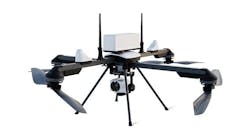Xwing Awarded Contract To Bring Its Autonomous Flight Technology to the U.S. Air Force
Autonomous aviation company, Xwing, announced today that it was awarded a Phase II Small Business Innovation Research (SBIR) contract with the USAF’s AFWERX Prime program. Through the agreement, Xwing will operate autonomous flight trials via its Superpilot flight system to advance the development of remote operations and optimize the technology for future missions. To quickly obtain user feedback on usability, mission planning factors, and features for future efforts, the trials will be performed on the Cessna 208B. The same platform on which Xwing first demonstrated an autonomous gate-to-gate flight in 2021. Once the use case for this system is validated, it will be possible to rapidly expand the capabilities to other aircraft since Xwing has developed its system to be transferable to other CTOL or VTOL platforms.
Launched in April 2020, the USAF’s AFWERX Prime program was created to accelerate and “prime” emerging commercial markets while bringing military interests that accelerate nascent technologies within the commercial market, benefiting the commercial industrial base and military capability. Xwing will further the USAF’s efforts by leveraging its existing autonomous technologies, including a fusion of flight control systems, collision avoidance systems, auto braking, auto taxi, and remote operations software to enable autonomous flight.
Xwing and the USAF kicked off the Phase II SBIR work recently in Northern California, where they will complete trials over a 21-month period. During these trials, current Air Force pilots and operational commanders will be able to provide feedback on usability and human factors related to Xwing Superpilot remote operations.
“Our autonomous flight system provides immediate value for cargo logistics,” said Marc Piette, Founder and CEO at Xwing. “The collaboration with the Air Force on these missions will provide valuable insight around high-priority system capabilities and help us to advance our technology toward dual-usage in commercial and military operations.”
The trials will provide both organizations with real-world mission data, identify areas for additional development to meet mission specifications, and data on the performance of the onboard detect and avoid perception stack. Xwing’s autonomous technology will eventually allow the USAF to remotely operate aircraft for a range of mission-specific purposes, including cargo delivery, intelligence, surveillance, reconnaissance, and medevac. The technology will improve safety and allow the USAF to avoid exposing pilots to high-risk scenarios while also reducing flight costs.

